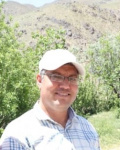| نویسندگان | ندا نجفی کلیانی,ابو الفضل رنجبرفردوئی,فاطمه پناهی,سیدحجت موسوی |
|---|
| نشریه | ECOPERSIA |
|---|
| شماره صفحات | 47 |
|---|
| شماره مجلد | 10 |
|---|
| نوع مقاله | Full Paper |
|---|
| تاریخ انتشار | 2021-11-16 |
|---|
| رتبه نشریه | علمی - پژوهشی |
|---|
| نوع نشریه | الکترونیکی |
|---|
| کشور محل چاپ | ایران |
|---|
| نمایه نشریه | ISC |
|---|
چکیده مقاله
Aims: This study aims to evaluate the Soil Hydrological Response (SHR) under LU/LC using a field-oriented and remote sensing database in the Jiroft watershed, Iran.
Materials & Methods: Land use maps were extracted from Landsat images using the supervised classification method for 1987-2017. The results were validated against field data from 100 points, where we found the Kapp index to be greater than 80%, indicating an acceptable land-use classification. The LU/LC map was then projected for 2047 using the CA-Markov model. The Curve Number (CN) for each land use was determined from superimposing LU/LC and the soil hydrological group map. The Soil Conservation Services-Curve Number method (SCS-CN) was employed to estimate runoff.
Findings: Good (densely vegetated) and moderate rangelands had a decreasing trend (i.e., -2.94% and -3.64% in 1987- 2017), while croplands, orchards, residential, and saline areas expanded (by 1.46%, 0.88%, 0.33%, and 7.21%). We found that agricultural lands, saline lands, and residential areas would increase by 0.75, 5.5, and 0.13%, by 2047, respectively.
Conclusion: We found a considerable increase (up to 6 mm increase) in runoff depth in some land-uses and more than 3.4% increase in the area of the high runoff producing class (IV). We believe that higher runoff production potential and more intense and short rain showers should be considered seriously in terms of possible flash floods in the future.
